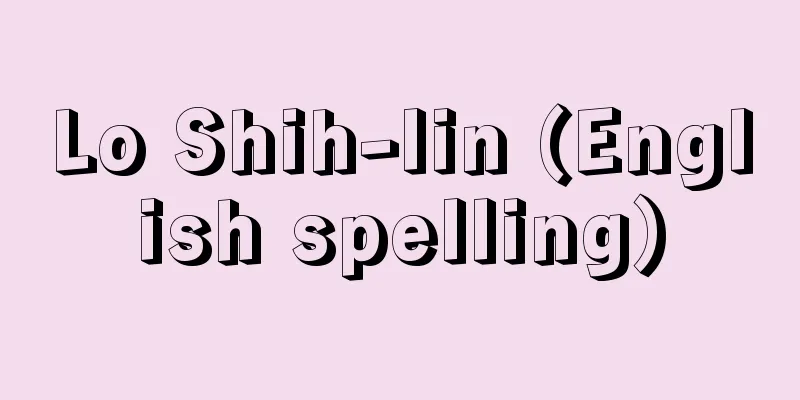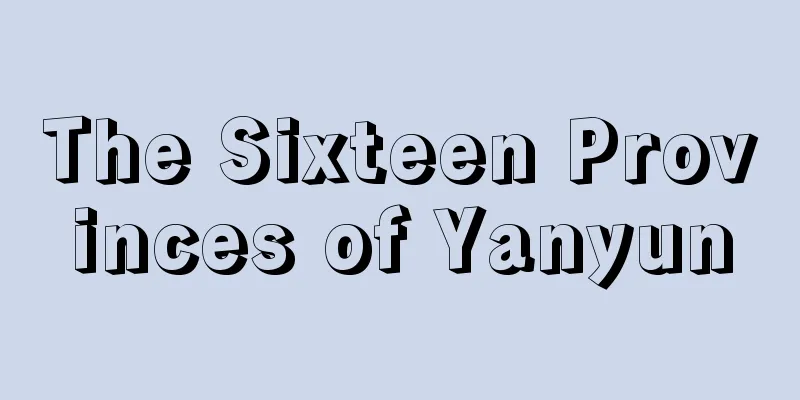Watanabe Kazan

|
A Dutch scholar and painter in the late Edo period. His given name was Sadayasu, and he was commonly known as Noboru. His pen name was Hakuto or Koyasu. He called himself Kazan, later Kazan, and used the temple names Gukaido and Zenrakudo. He was born in Edo as the eldest son of Sadamichi, a samurai of the Tahara domain in Mikawa Province (Aichi Prefecture). He first studied Confucianism under the domain scholar Takami Seiko (1751-1811), but later studied under Sato Issai and then Matsuzaki Kodo. He suffered from poverty from an early age and studied painting to make a living. In 1824 (Bunsei 7), he succeeded his father as head of the family upon his death. In 1832 (Tenpo 3), he became a member of the lowest-ranking elder council (Karo), and in charge of the affairs of the domain, he worked to promote industry and was also in charge of the coastal defense department. During this time, Kazan became acquainted with Dutch scholars such as Takano Choei and Koseki San'ei, organized the Shoshikai to study Western affairs, and implemented enlightened policies through a wide network of acquaintances, including Takami Senseki, a Karo of the Koga domain. In 1837, an American ship called the Morrison arrived in Uraga with Japanese castaways on a trade mission to Japan, but was repelled by an order to repel foreign ships (the Morrison Incident). In response to this, Kazan wrote Shinkiron in 1839, in which he and Choei criticized the shogunate's isolationist policy, which turned a blind eye to the world situation and went against humanity. As a result, he was arrested in May of the same year by the Bansha no Goku crimes, and in December he was ordered to live in seclusion in Tahara, his hometown. In 1841, his disciples held an art gathering in Edo to help Kazan out of his dire situation, but it was mistakenly reported that he was being disrespectful while under house arrest. Fearing that the consequences would extend to the feudal lord, Kazan committed suicide. Other works he wrote include Gekizetsu Wakumon (1838). [Kazuo Katagiri July 19, 2016] Kazan was fond of painting from an early age, and initially studied under Hirayama Bunkyo, but in order to earn a living he decided to become a painter in earnest, and at the age of 16 he studied under Shirakawa Shizan (date of birth and death unknown). He later studied under Kaneko Kinryo (?-1817) and then Tani Buncho. He started out by painting bird-and-flower paintings in the style of Shen Nanpin, but in his work "A Hundred Faces of Life," which he created at the age of 26, he used a bold brush to vividly depict the various poses of everyday life of ordinary people, displaying his own unique style. Meanwhile, his interest in Western studies led him to lean towards Western painting, and from around the age of 29 he began to create unique portraits that, in addition to depicting clothing using traditional techniques, also incorporated the perspective and shading of Western painting to create a three-dimensional look at faces. In addition to his works such as "Portrait of Takami Senseki" (National Treasure, Tokyo National Museum) and "Portrait of Ichikawa Beian," Kazan also left behind masterpieces in his preliminary sketches. His sketchbook "Kakuzashoki" is vibrant with brushwork that accurately depicts moving subjects, and is full of the freedom and flexibility that is often lacking in original paintings. His other works include "Scenes of the Four Provinces," "Thousand Mountains and Rivers," "Certified Writing," "Ukokomon," and "A Bowl of Huang Liang." All of Kazan's paintings unfold while changing the nature of his lines, sometimes freely and sometimes purposefully, in the midst of the conflict with the way of life of a samurai. His disciples included Tsubaki Chinzan and Okamoto Shuuki (1807-1862). [Suzu Hoshino July 19, 2016] "The Complete Works of Kazan, edited by Suzuki Seisetsu (1910-1915, Kazan Association/1941, Kazan Series Publishing Association)" ▽ "Watanabe Kazan: A Sweeping Sweep of Myriad Forms, Commentary by Kurahara Tsunehito (1969, Iwasaki Bijutsusha)" ▽ "Complete Works of Japanese Art Paintings 24: Watanabe Kazan" (1977/Popular Edition, 1980, Shueisha)" ▽ "Watanabe Kazan, by Yoshizawa Tadashi (1956, University of Tokyo Press)" ▽ "Watanabe Kazan, by Mori Senzo (1961, Tokyo Sogensha/Chuko Bunko)" [References] | | | | | Senseki| | Domain|House of confinement| | | |Source: Shogakukan Encyclopedia Nipponica About Encyclopedia Nipponica Information | Legend |
|
江戸末期の蘭学(らんがく)者、画家。諱(いみな)は定静(さだやす)、通称は登。字(あざな)は伯登または子安。華山のち崋山と号し、寓絵堂(ぐうかいどう)、全楽堂の堂号を用いた。三河国(愛知県)田原(たはら)藩士定通(さだみち)の長子として、江戸の藩邸内で生まれる。初め藩儒鷹見星皐(たかみせいこう)(1751―1811)に儒学を学んだが、のち佐藤一斎(さとういっさい)に師事し、ついで松崎慊堂(まつざきこうどう)に学んだ。幼少から貧困に苦しみ、生計のために画を修業した。1824年(文政7)父の死によりその家督を継ぐ。1832年(天保3)年寄役末席(家老)となり、藩務にあたり、殖産興業に努めるとともに、海防掛も担当した。このころ崋山は高野長英(たかのちょうえい)、小関三英(こせきさんえい)らの蘭学者と交わり、尚歯(しょうし)会を組織して西洋事情を研究し、古河(こが)藩家老鷹見泉石(たかみせんせき)をはじめ広く交際をもって、開明的政策を行った。1837年、日本漂流民を伴い対日通商を目的として浦賀に来航したアメリカ船モリソン号が、異国船打払令によって撃退される事件(モリソン号事件)が起こり、これに対し、崋山は1839年『慎機論(しんきろん)』を著し、長英らとともに、いたずらに世界情勢に目を覆い、人道に背く幕府の鎖国政策を批判した。このため同年5月蛮社の獄によって捕らえられ、12月、国元の田原に蟄居(ちっきょ)を命じられた。1841年、崋山の窮迫を助けるため、弟子たちが江戸において開いた画会が、蟄居中不謹慎(ふきんしん)と誤り伝えられるに及び、崋山は藩主に累の及ぶのを恐れて自殺した。著作には、ほかに『鴃舌或問(げきぜつわくもん)』(1838成立)などがある。 [片桐一男 2016年7月19日] 崋山は幼少より絵に親しみ、初め平山文鏡に手ほどきを受けたが、生計のためもあって本格的に画家を志し、16歳のとき白川芝山(しらかわしざん)(生没年不詳)につく。のち金子金陵(かねこきんりょう)(?―1817)、ついで谷文晁(たにぶんちょう)に入門。初め沈南蘋(しんなんぴん)風の花鳥画を描いたが、26歳の作品『一掃百態(いっそうひゃくたい)図』では闊達(かったつ)な筆で庶民の日常のさまざまな姿態を生き生きと描き分け、独自の作風をみせている。一方、洋学への興味が西洋画への傾斜となり、29歳ごろより伝統的手法による衣服表現に加えて西洋画の遠近法や陰影をよく消化した立体感ある顔貌(がんぼう)表現で独自の肖像画を完成した。『鷹見泉石像』(国宝、東京国立博物館)、『市河米庵(いちかわべいあん)像』などのほか、その下絵にも傑作を残している。また写生帳『客坐掌記(かくざしょうき)』は、動きのある対象を的確に描写する筆致が生彩を放ち、本絵に欠落しがちな自由さと柔軟さにあふれている。ほかに『四州真景図巻(ししゅうしんけいずかん)』『千山万水(せんざんばんすい)図』『校書(こうしょ)図』『于公高門(うこうこうもん)図』『黄粱一炊(こうりょういっすい)図』などがあるが、崋山の画はいずれも武士としての生き方との相克のなかで、ときに自由に、ときに意志的にその描線の性格を変えつつ展開している。弟子に椿椿山(つばきちんざん)、岡本秋暉(おかもとしゅうき)(1807―1862)がいる。 [星野 鈴 2016年7月19日] 『鈴木清節編『崋山全集』(1910~1915・崋山会/1941・崋山叢書出版会)』▽『蔵原惟人解説『渡辺崋山 一掃百態』(1969・岩崎美術社)』▽『『日本美術絵画全集24 渡辺崋山』(1977/普及版・1980・集英社)』▽『吉澤忠著『渡辺崋山』(1956・東京大学出版会)』▽『森銑三著『渡辺崋山』(1961・東京創元社/中公文庫)』 [参照項目] | | | | | | | | | | | | |出典 小学館 日本大百科全書(ニッポニカ)日本大百科全書(ニッポニカ)について 情報 | 凡例 |
Recommend
Luis de Granada (English spelling)
…Other important works by Cervantes include the t...
Hyperviscosity syndrome
…It is often seen in association with myeloma, ma...
Leg rush - Ashii
Plant. Annual grass of the Poaceae family. Another...
Saonetsuhiko - Saonetsuhiko
He appears as a guide in the story of Emperor Jimm...
Japanese pond turtle (insect) - Japanese pond turtle
… In Japan, the old name is Hou or Fuu, and it is...
Futtsu [city] - Futtsu
A city in the southwest of Chiba Prefecture. It wa...
"Principles of Music" - Ongakugenron
…Only fragmentary reports of his life are known f...
Donut - donut (English spelling) doughnut
Dough made from flour mixed with sugar, eggs, bak...
Ciboneyes
… 【history】 [Early colonial period] Cuba was disc...
Productive capital
〘 noun 〙 Capital that is directly useful for produ...
Cadmos - Kadmos (English spelling)
In Greek mythology, he was the founder and first ...
Chiasma - Chiasma (English spelling)
During the prophase of meiosis, two paired chromo...
Hachiryu [town] - Hachiryu
A former town in Yamamoto County facing the Sea of...
Ofuku (person's name) - Ofuku
...She was the wet nurse of Tokugawa Iemitsu. She...
Light beating - karukitaki
...corporal punishment (corporal punishment) in w...









